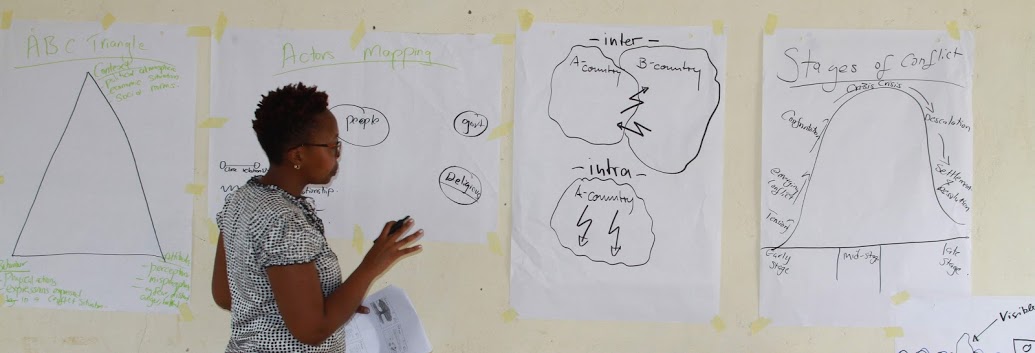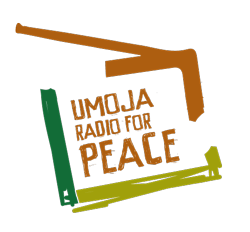
Project Context
In the aftermath of the 2007/8 post-election violence in Kenya, various reports by independent media organisations commended community radio in Kenya in the stemming of the violence. The BBC World Service Trust Media Policy Briefing of 2009 observed that community media, despite its tiny size, emerged from the post – election crisis with great credit and provided a model for the future. The briefing recommended better and more strategic engagement and support with community radios in Kenya in peace building engagements. At the same time, the World Association of Community Radio Broadcasters Africa (AMARC-Africa) produced a report titled, Community Radio and The Post -Election Violence In Kenya In 2008 by Matu Nguri . The report found that the community radio stations in Kenya were careful in their coverage of violence, were not perceived to have taken sides in their coverage and had a much higher score than the rest of the media.
Community radios in Kenya have become more sensitive on ethnic diversities after the 2007/ 8 post-election violence and have increasingly encouraged peaceful co-existence in their communities. They have played bigger roles in efforts on peace building and conflict resolution in Kenya. However, many community radio journalists still lack formal education in journalism and training in particular in conflict sensitive reporting. They lack sufficient training or body of knowledge and experience they can easily fall back on when reporting violence. In the context of violence, many follow their commonsense and the guidance of the values and mission of their stations.
Granted that some journalists from community radio stations have been trained and engaged in election and conflict sensitive reporting, much more still needs to be done to reach out to more community radio stations in Kenya and deepen their knowledge and engagements in conflict sensitive reporting and also improve their journalism and content production skills.
Project Objective
Community radio actively engaged in conflict sensitive reporting in the pursuit of sustainable Peace and development in Kenya.

Approach
The project will work in three levels i.e. capacity building, program sharing and content production. It will involve about 36 community radios in Kenya i.e. 23 public Community radios and 13 Catholic radios of the KCCB -Waumini communications.
UMOJA Radio for Peace project will seek to implement its objective through building capacities of the community radios journalists. This will be done through in house training’s and workshops in geographical clusters where the community radios are located at. Each radio will be expected to send their representatives for the training’s. Field assessment visits will also be done to gauge the nature, strengths and challenges on conflict sensitive reporting and in general journalism and content production capabilities.
Small grants will be provided for content production e.g. feature stories, radio spots, radio drama etc. to enhance more good quality peace related productions.
Special events like World Radio and World Press freedom day will also be commemorated together with the radio makers to keep the spirit of radio alive and to celebrate its milestones.
Expected results
- This is aimed at strengthening the community radio journalists’ knowledge and skills and how to report in a conflict sensitive manner
- Equip them with the attitudes and skills to produce and broadcast radio programs on peace building and conflict resolution in Kenya
- Promote behaviour change and active engagement of community radio listeners/audience in peace building and conflict resolution in their communities and in the country at large
- Facilitation and improvement of the journalists skills on production of better/high quality radio features and/or radio-drama
Umoja Radio for Peace project is implemented by:

Frequently Asked Questions
What is conflict?
Conflict occurs when two or more people/groups are in pursuit of mutually incompatible goals, interests, values, or objectives,
where these are often insufficient to satisfy all. Conflict can be violent or nonviolent. Conflict is not always negative and can lead to positive outcomes such as enhancing self awareness, be a medium for airing of problems, unity and content development. Conflicts turn violent when parties no longer seek to attain their goals peacefully, but instead, resort to violence. The following are types/levels of conflicts; Interpersonal; conflicts within a person, such as inner struggles. Interpersonal; Conflicts between two people or a small group of people. Intra and intercommunity conflict: These include intracommunity conflicts which take place between communities of the same ethnic group e.g. between families, between age sets and within and between clans. Intercommunity conflicts occur between two or more communities e.g. Turkana Pokot, Pokot Marakwet, among others.
What is the Umoja content production fund?
In order to enable the community radio stations to do this work of investigative and storytelling journalism, one project activity of UMOJARadio for Peace is the establishment of an independent Content Production Fund.
This fund will help Community Radio Stations with small grants to produce features, reports, radiodrama and
digital storytelling or any other content related to the main issues of our peacebuilding project.
Do you have a sustainability strategy for Community Radio in Kenya
Community radios in Kenya, as elsewhere in the world, are largely dependent on donors outside their communities for their survival. In the efforts to change this, Kenya Community Media Network (KCOMNET) has been supported by Stem van Afrika (SvA) through the Catholic Media Council (CAMECO) for a two year project (2017 – 2018) to improve the financial sustainability of community radio stations in Kenya by enhancing community participation
and collective marketing.
